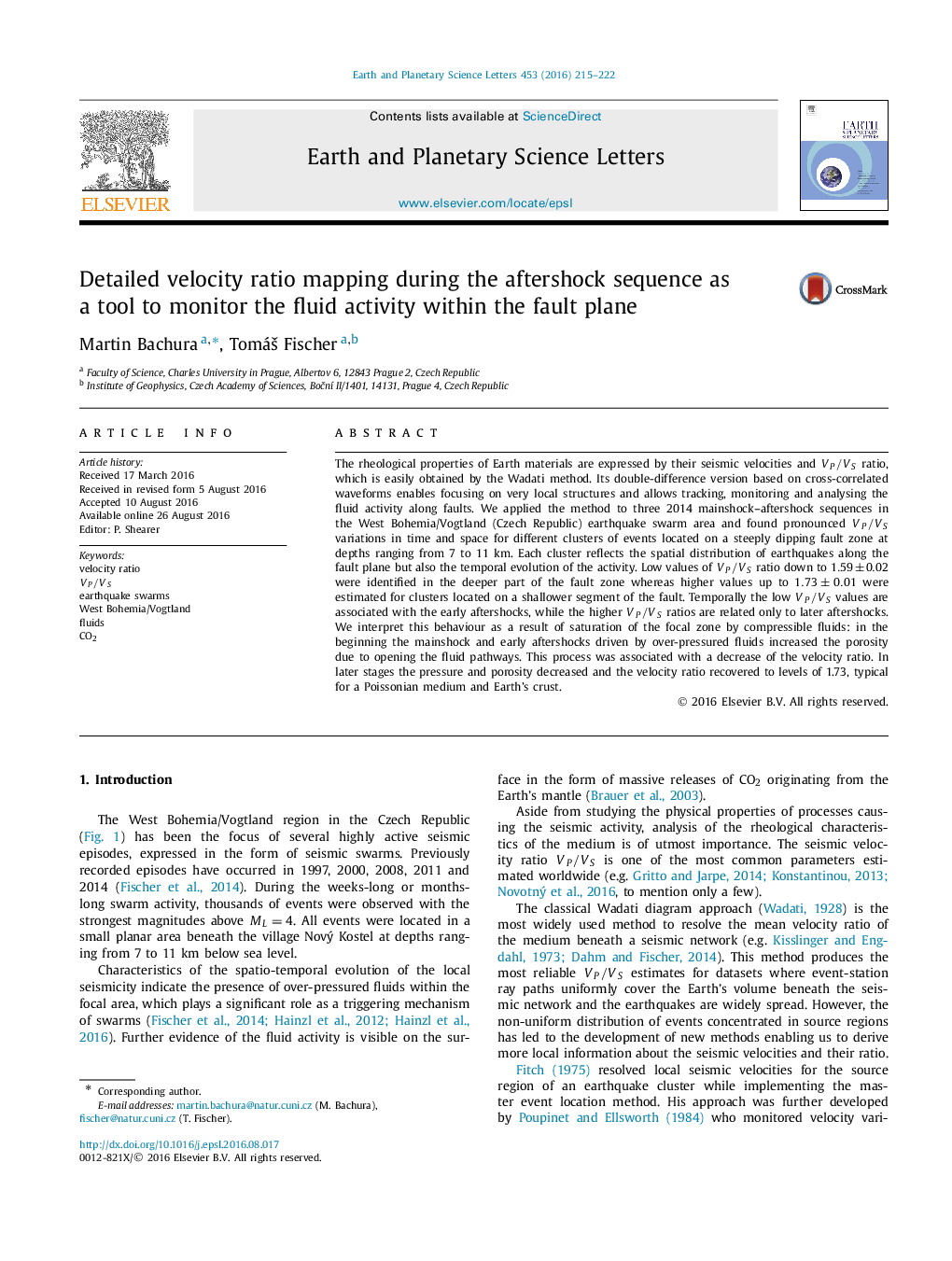| کد مقاله | کد نشریه | سال انتشار | مقاله انگلیسی | نسخه تمام متن |
|---|---|---|---|---|
| 6427163 | 1634703 | 2016 | 8 صفحه PDF | دانلود رایگان |

- The double-difference method allows tracking the fluid activity along fault.
- Vp/Vs spatio-temporal distribution with precision beyond tomography possibilities.
- Values from 1.59 to 1.73, interpreted in terms of Biot-Gassman equations.
- Changes of Vp/Vs reflect the porosity changes due to a supercritical CO2 intrusion.
- Vp/Vs contrast indicates change of the fluid role on the rupturing process.
The rheological properties of Earth materials are expressed by their seismic velocities and VP/VS ratio, which is easily obtained by the Wadati method. Its double-difference version based on cross-correlated waveforms enables focusing on very local structures and allows tracking, monitoring and analysing the fluid activity along faults. We applied the method to three 2014 mainshock-aftershock sequences in the West Bohemia/Vogtland (Czech Republic) earthquake swarm area and found pronounced VP/VS variations in time and space for different clusters of events located on a steeply dipping fault zone at depths ranging from 7 to 11 km. Each cluster reflects the spatial distribution of earthquakes along the fault plane but also the temporal evolution of the activity. Low values of VP/VS ratio down to 1.59±0.02 were identified in the deeper part of the fault zone whereas higher values up to 1.73±0.01 were estimated for clusters located on a shallower segment of the fault. Temporally the low VP/VS values are associated with the early aftershocks, while the higher VP/VS ratios are related only to later aftershocks. We interpret this behaviour as a result of saturation of the focal zone by compressible fluids: in the beginning the mainshock and early aftershocks driven by over-pressured fluids increased the porosity due to opening the fluid pathways. This process was associated with a decrease of the velocity ratio. In later stages the pressure and porosity decreased and the velocity ratio recovered to levels of 1.73, typical for a Poissonian medium and Earth's crust.
Journal: Earth and Planetary Science Letters - Volume 453, 1 November 2016, Pages 215-222